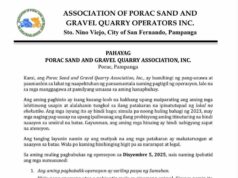The JR PASS is a joint offering of the six companies comprising the Japan Railways Group (JR Group) that can only be bought online by foreign tourists and temporary visitors to the Land of the Rising Sun or by personally procuring it in their country of origin – in my case the Philippines.
Japanese citizens, residents and those with extended visas are not allowed to buy the JR Pass.
The JR Pass is a passport to JR’s fleet of Shinkansen (Japanese bullet trains), rapid trains and buses which crisscross Japan from Hokkaido to Kyushu.
An ordinary seven-day JR Pass costs around ₱14,000 while a business class or Green Pass is worth ₱19,000 for the same time period. The validity period of a JR Pass is a consecutive 7, 14 or 21 days with corresponding rates.
My trip began with a brief four-day sightseeing tour in this most populous capital city in the world.
The tour brought us to the majestic snow-capped Mt. Fuji and a panoramic view of the city among others before it was time to leave for some of my media colleagues and for me to embark further on my journey.
It’s now time to use the JR Pass to travel to Okazaki City in the Aichi Prefecture.
First thing to do is to have my JR Pass stamped at any JR Pass Service Centers which are usually found in all train stations in Japan. Once stamped, the JR Pass is activated for its validity period.
The trip to Okazaki will take 2 hours and 26 minutes, according to the English speaking receptionist at the JR office at the Ikebukuro Station in Tokyo when I got there as it opened at 9 A.M. on Saturday.
But as I found out later, the actual train ride was even shorter than two hours since the allotted time included the layover stops in changing trains.
At the station, I took the Yamanote line No. 6 to Shinagawa which was exactly 28 minutes travel time. In Japan, everything is precise. No one gets late most especially the transport system.
JR Pass holders need not pass through the turnstiles but have their own way near the office manned by a very polite guard.
Arriving at Shinigawa at 10:29 A.M., I caught the Hikari 509 (Shinkansen) at 10:40 A.M. to Toyohashi which took 77 minutes. The Green Pass is worth it with the grand ride and comfortable accommodation. I got to Toyohashi at 11:57 A.M. and took the Kodama 645 (Shinkansen) at 12:13 P.M. to Mikawa-Anjo which took only 14 minutes.
I got off at the Mikawa-Anjo station at 12:27 P.M. where I was fetched by my sister Arlyn and my nephew Robyn for a short 40-minute drive on board his brand new Toyota Harrier to their residence in nearby Okazaki City.
By-the-way, there is also a local train going to Okazaki City from Mikawa-Anjo with a ¥200 fare.
After staying two days in Okazaki with an overnight stay at the Kuragari River Valley Resort with my sister’s family, I travelled to Kyoto on Tuesday going via the Mutsuna (JR) station in Okazaki.
I took the Tokaido Shinkansen line to Kyoto which is operated by JR Central between Tokyo and Shin-Osaka. Travel time is less than an hour. As usual, I used the JR Pass again.
The Kyoto Station is grand. It has a shopping mall, hotel, department store and several government facilities under one 15-story roof. It is nothing short of a modern terminal building with high-tech western style toilet facilities even if the traditional Japanese style toilets are still around but very clean.
In front of the Kyoto Station is the New Miyako Hotel where I stayed for the night. It offers a perfect view of Shinkansen trains coming and going.
The following day, I went to Osaka. From the Kyoto Station, I took the Shinkansen which is just about 12 minutes away to the Shin-Osaka Station and then transfer to a local train to Osaka for another 10 minutes.
The local train can also take you to Osaka directly from Kyoto for just a short 30-minute travel time which I took on my way back.
From Osaka, I went back to Kyoto for a night in a capsule hotel before traveling to Nagoya via Shinkansen with my JR Pass in the morning to reunite with my sister and my niece Bea.
The Nagoya station is by far the biggest I’ve seen and is probably the biggest in the world with a floor area of 410,000 square meters and with its twin towers rising 50 storeys high. It also houses the Central Japan Railway Company (JR Central).
After a day-long tour in Nagoya, we went back to Okazaki changing trains until we arrived at the Mutsuna station at exactly 9:13 P.M. From there, we took a taxi home with a fare of about ¥1,000.
By Friday, we were scouting for the best Unagi (Japanese freshwater eel) and ramen house in Okazaki while enjoying the sights with my brother-in-law Bet and my sister.
On Saturday, it was time for me to leave back home to the Philippines via Cebu Pacific Air at the Chubu Centair International Airport in Tokaname.
In all, I travelled a total distance of more than 700 kilometers including the 515.4-kilometer distance between Tokyo and Shin-Osaka via the Tokaido Shinkansen rail.
In retrospect, I caught a glimpse of the Japanese way of life and personally felt an immersion in their culture.
Indeed, it was a trip well worth it.
Next time, I plan to maximize my JR Pass with a 14- day validity by traveling from Hokkaido to Kyushu which has a distance of exactly 2,303 kilometers.




